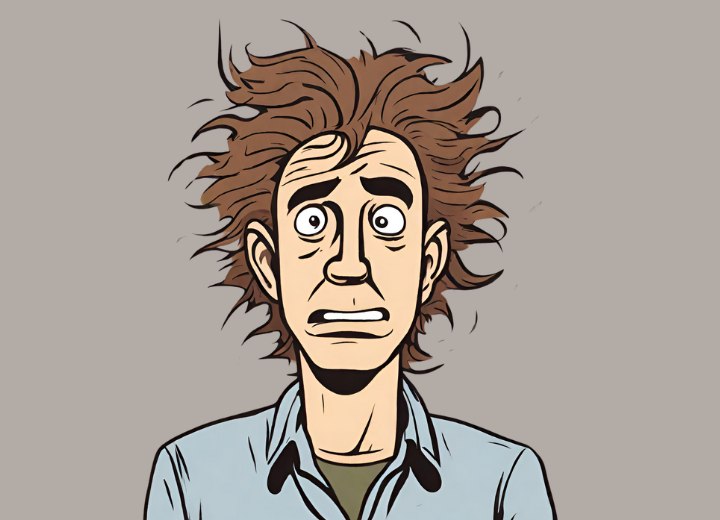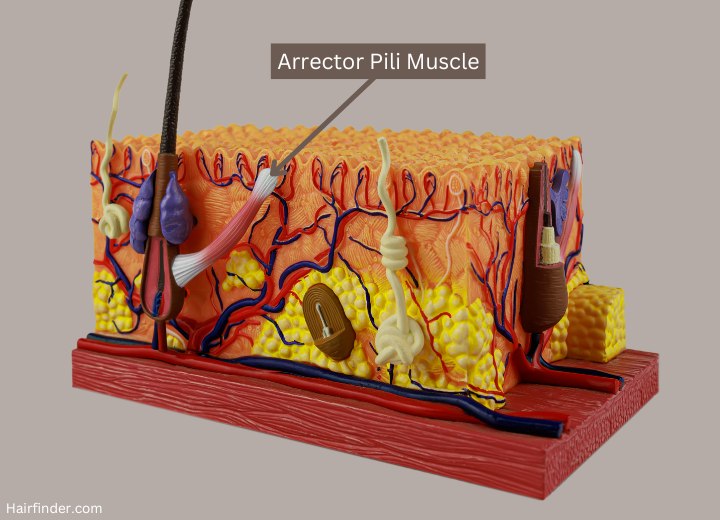Hair-raising

Q: I understand the everyday meaning of "hair-raising" when someone says they had a hair-raising experience, indicating it was scary. But, I'm curious from a scientific perspective. Can your hair actually physically stand up when you're scared?
A: When we talk about a hair-raising experience, we're usually talking about the involuntary piloerector reflex. This reflex involves the contraction of tiny but powerful muscles called arrector pili muscles, connected to each hair follicle. In humans, these muscles are pretty small, but when they contract, it makes the hair stand upright, giving us what we commonly call "goosebumps."
In moments of intense emotion, especially fear, our sympathetic nervous system kicks becomes activated. This activation leads to the release of adrenaline into our bloodstream. Adrenaline, in turn, stimulates the arrector pili muscles, causing them to contract. The result of this muscle movement is that the hair stands upright, creating the visible effect of raised hair.
How effective this response is can vary from person to person, influenced by factors like genetics, overall health, and the sensitivity of one's nervous system. While goosebumps are a common and well-known response to fear, not everyone will have the same visual impact of hair standing on end.

The image of hair standing straight up due to fear, as often shown in cartoons, is a stylized and exaggerated representation of this physiological response. The exaggerated portrayal in cartoons is more of a creative interpretation than an accurate representation of how it happens in real life.
©Hairfinder.com
See also:
How strong is hair?
What is hair made of and how does it grow?